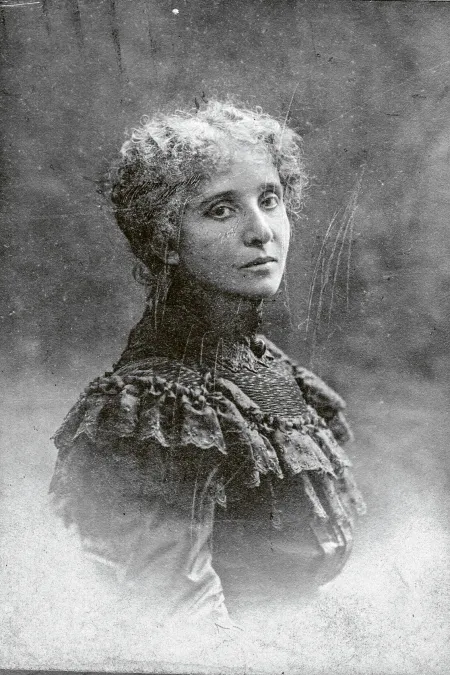Text: Dávid Gajdos
The text was published in edition 2 (03/25).
Reading time 3 Min.
Strong pleas for legendary women

In the first orchestra concert of the festival summer women are in the spotlight – especially on stage, but also in the music. While Maurice Ravel’s Shéhérazade enfolds the legendary narrator of One Thousand and One Nights in a shimmering exotic tone color, Mel Bonis creates almost the exact opposite in Trois femmes de légende: She feels deeply into her characters and gives Cleopatra, Ophelia and Salome their own musical voices. With this concert conductor Elim Chan sets a strong example for forgotten female composers – and for female characters, who are trapped between myth and reality.
William Shakespeare and Oscar Wilde brought them to the big stage. Richard Strauss, Georg Friedrich Händel and most recently John Adams turned them into heroines of the opera world: In recent centuries, Cleopatra, Ophelia and Salome were mostly struck down by men on the open stage, accompanied by effective music. As an exception, in Trois femmes de légende these three tragic female characters are brought to life by a woman, who was virtually predestined for this task due to her biography.
Mélanie Hélène Bonis, born on 21 January 1858 in Paris, grew up in a middle-class family, who placed a lot of importance on her catholic education, but ignored her musical talent for a long time. Until she was twelve years old, she taught herself how to play the piano, when a friend of the family finally convinced her parents that she needed music lessons. Later she was introduced to the composer César Franck, who was so impressed by her that he gave her private lessons and admitted her to the Paris Conservatoire. There, she made friends with Claude Debussy, who was four years younger and with whom she studied composition. Several awards confirm what in retrospect seems obvious: She was extremely talented. “But”, she was woman, who in this rigid society, was forced into the role of a solo pianist at best, even more so into the role of a full-time mother.
One suffers to the extent that one loves.
Bonis reacted to the societal headwind by shortening her name to the androgynous sounding abbreviation Mel, but she could not fool her family with that. When she fell in love with the singing student Amédée Landély Hettich, who was two years older, her parents forced her to quit her musical education at the age of 20, which displeased her professors. No matter how successful the young Hettich was, how passionately he courted Bonis, her family would never agree to a marriage. Although, he must have been an inspiring young man, who wrote poetry and was also quite successful as a journalist and singer. Bonis even set some of his texts to music, however she eventually gave in to her parents’ constraints, who soon arranged a marriage for her. Socially that marriage was a huge step: In 1883, she married Albert Domange, who was widowed twice and had five sons and considerable wealth. The problem: Domange did not like music, was twice Bonis’ age and, was not Hettich.
Bonis gave up music for almost ten years. Instead, she managed twelve servants and a big house in the elegant Rue Monceau and gave birth to three children. While her collage friend Debussy traveled to Italy with the Prix de Rome and lived a bohemian life, Bonis became Madame Domange, the dedicated wive of a successful industrialist. When Debussy celebrated his breakthrough with his artistic debut Prélude à l’après-midi d’un faune in 1894 and at least to some extent invented impressionism in music, Bonis was miles away from that kind of success, but at least she was active in music again. The main reason for that was her reunion with Hettich. In the meantime, he had become a prominent singing teacher and was married, but he was still in love with Bonis. Their initially platonic relationship brought her back to the music industry. She set his poems to music, accompanied his students and started composing again. It was also Hettich, who introduced her to the publisher Alphonse Leduc, who from then on released her work.

Bonis orchestrated Trois femmes de légende at the beginning of the 1920s. It is based on three piano pieces from her most successful period before the First World War. Widowed and, after everything that had happened, increasingly depressed, she lived more and more forgotten with her illegitimate daughter, until she too got married. Bonis died on 18 March in 1937, only 18 days later, Hettich died too.
Elim Chan
Wiener Symphoniker
21 July 2025 – 7.30 p.m
Claude Debussy
Prélude à l’après-midi d’un faune
Maurice Ravel
Shéhérazade
Mélanie (Mel) Bonis
Trois femmes de légende
Claude Debussy
La Mer


